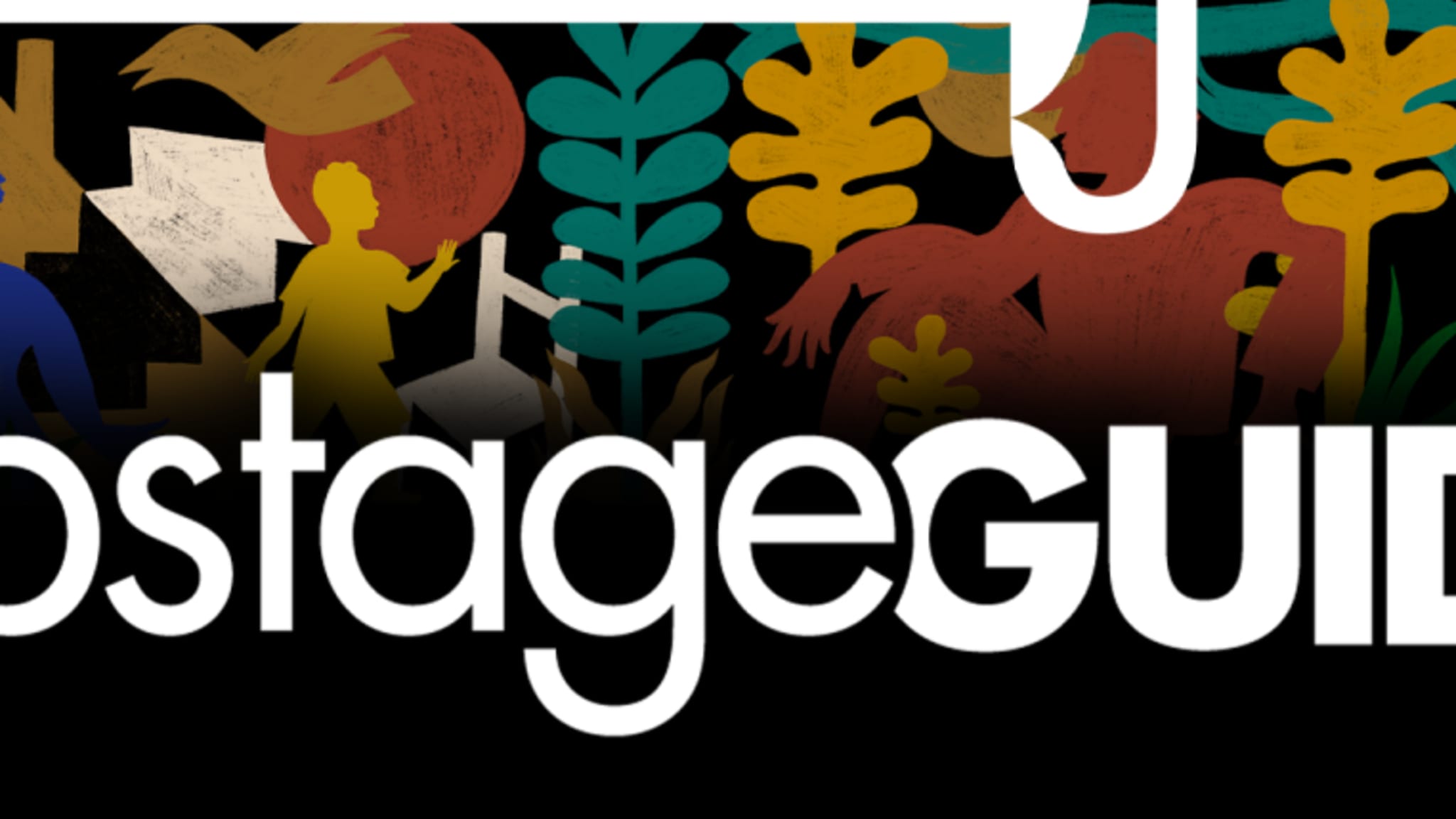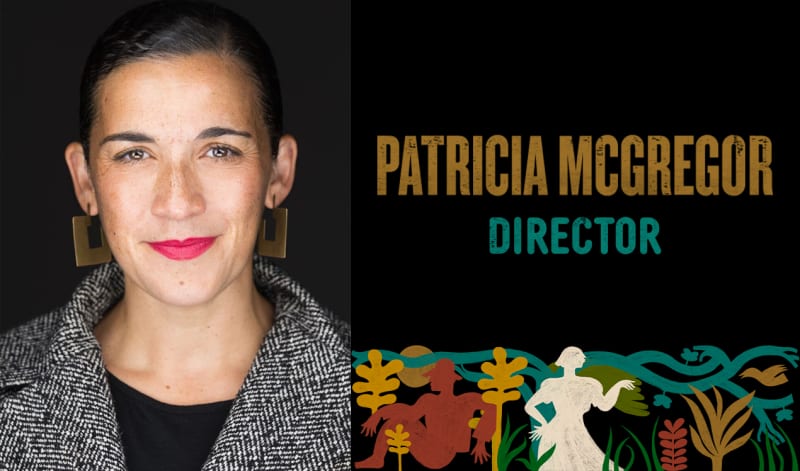Teaching Artist Leah Reddy spoke with director Patricia McGregor about her work on The Refuge Plays. McGregor is also the artistic director of New York Theatre Workshop.
Leah Reddy: What is your theatre origin story?
Patricia McGregor: I grew up in St. Croix in the Virgin Islands where it felt everyone in my family were storytellers. Part of the currency in our family was who could tell the best story. So I grew up with storytelling as a cultural practice in public spaces. I was involved very early on with a company called Caribbean Dance Company in St. Croix that gave me structure and physical embodiment to my storytelling. My mother was an art teacher and so designed costumes for Carnival. So as much as I've spent a lot of time becoming a storyteller for indoor spaces, a lot of my ideas about storytelling as a cultural practice wants to burst out of those spaces and be as accessible to as many people as possible.
LR: You became the artistic director of New York Theatre Workshop in 2022. How are you balancing your work as an artistic director and your directing practice?
PM: Before taking on that job, I would often be somewhere in process [of directing] of five to eight pieces. Now it's more like two to three pieces. There's a drastic reduction so that I can center the curation and producing and upholding of what this next chapter of the Workshop is going to be. I cleared a lot of my calendar, but I did still hold onto—and we talked about this in the interview process—that directing is part of what keeps me fed and fueled and keeps my skills sharp. When we need to figure out how to solve a problem, whether that's in terms of resources or prioritizing, being in the practice of directing makes me incredibly sympathetic to what visionary artists might need to create their work. My hope is that my continued directing practice, while drastically reduced, will be nourishing for me as an artist and useful and strategic for me as a leader.
LR: What drew you to The Refuge Plays?
PM: Jim Houghten and the folks at Julliard sent this piece to me when I had just moved to Hawaii. I moved to Hawaii because I had a son. I was thinking about trying to find the safest place to raise this young Black boy in a country that didn't always feel like it was creating the safest place for him. The Refuge Plays struck me immediately because I had made this radical choice to move out of New York City to try and create this safe place to raise my family. And even after moving back, I still think about that a lot. I think about how we can create places that nourish an individual soul in a certain kind of way. It was also set in Carbondale, Illinois, which I had lived in when I was young, so it felt very known to me.
I love that it is epic and poetic. It is mysterious and grounded. It has a kind of dynamic tension. While I love each individual piece, I also love that it is a trilogy and it reminds me of one of the first things I worked on when I was out of school: Tarell McCraney's Brother/Sister Plays. There's a politics to not looking at ourselves just as an individual slice of life, but to contextualize ourselves over generations. There was just so much that I was drawn to.
LR: You've been involved with the script for quite a long time, given that it was programmed to be produced before the pandemic. Has anything changed about your experience of the story in that timeframe?
PM: That's an interesting question. Now I have a nine-year-old. When we started, I had a one-year-old. What do I need to feel like he will be safe enough for his journey in life? That question is even more active for me as I know the path that will call him outside of my home is even more clear.
I've also taken care of my own parents, wrestling with death. My father passed about two months ago, and my mom's come to live with us. This gives me a deeper understanding of the huge journey of life as evidenced in this play. It's not looking at just one generation, but it's looking at the intergenerational impact. I hope I've grown in some understanding of both the beauty and the complexity of that dual care taking role.
LR: In terms of rehearsing the trilogy, how are you approaching rehearsing plays that move backward in time? Is there anything that's changing about your process looking at something so epic in scope?
PM: In a very practical way, I joke that we're going to rehearse like a three-ring circus because not only is it a big piece, but we're going to involve stylized movement at times and song and familial rituals. We're literally going to have three rehearsal rooms or three rings running at different times. It's going to allow for both mystery and simultaneity. Sometimes my associate director will be rehearsing something and I won't necessarily know how they got to a moment. I love the kind of mystery of that.
From a zoomed-back perspective, I believe my history is very present with me right now. While these plays go in reverse chronological order, the first play is always with the people of the last play. We're going to try and plant Easter eggs. For example, you might see somebody eating chips in one play, but it will have much deeper meaning once you see it [again] in the second or the third play. All that is to say, while we rehearse these things with lots of different co-captains in different rehearsal rooms, we're going to make some discoveries that hopefully will be little Easter eggs of meaning that, once you see all the pieces together, you'll grow in your understanding of what an individual moment meant.
LR: What advice do you have for young or emerging directors?
PM: Try and keep a very active compass. And by compass I mean looking at your north, your east and west and your south. Your north is: who's doing a thing that I'm interested in? Who has a career or is doing shows that inspire me? What can I learn from them? How could I make some kind of connection or read or have some kind of introduction? How can you connect to the people who there's a kind of aspirational north star in that way?
And then, most importantly, how can you stay really in active connection and support with what I call your east and west. Your peers, whether that's a writer or a producer or a designer. How can you show up for and ask for your peers to show up for you? Whether you can do something magnificent for $100 or $1 million, if you have the right peers and you support each other, that's how you develop a whole body of work.
Your south, which is wherever you are in your career, in your trajectory, you're probably ahead of someone who is a day or an opportunity behind where you are. How can you be the north star for someone else? How can you share some knowledge, share an opportunity, share some wisdom or a resource? If you keep your compass really active, if you really show up for your peers in meaningful ways, if you really stay connected with some of those north stars, and then if you really become a resource for some of the folks who are coming after you, I think that's how you nourish a whole life and a whole fulfilling career.
Published on September 21, 2023.




